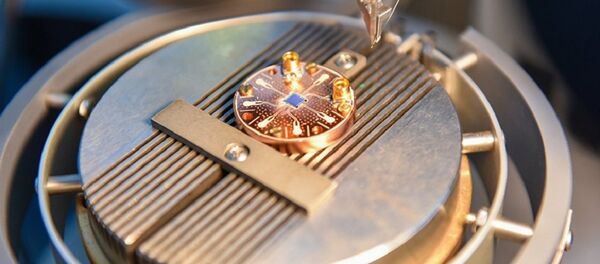The water-water energetic reactor vessel (the most popular type of reactor in the world) VVER-440 is one of the most important units in a nuclear power plant. Its safety and operating efficiency largely define the safety level of the nuclear plant.
When operating, a reactor vessel is subject to fast neutron exposure, which results in radiation hardening (loss of plasticity) in the reactor's base metals due to the formation of nano-scale radiation-induced defects and phases.
READ MORE: Russian Scientists Suggest Making Electronic Devices From ‘Carbon Peas'
Due to a reactor vessel's exposure to radiation and operating temperature (~ 300оС), segregations of impurity elements are formed on grain boundaries, which results in a reduced strength of these grain boundaries. The formation of harmful impurity segregations in grain boundaries results in reduced crack resistance in the metals.
This limits the life cycle of the reactor vessel, as the probability of a brittle fracture upon reflooding it with cold water in case of emergencies increases over time. In 1991, in order to extend the service life of the VVER-440 reactor vessel, scientists conducted a recovery annealing process on a number of these vessels, thus extending their service life up to 45 years.
The technology for recovery annealing was developed and patented at the Kurchatov Institute. It requires a certain temperature, holding time, a rate of heating to different annealing temperatures required for different stages, and a cooling rate.
READ MORE: Russian Scientists Create New Breakthrough Material for Nuclear Reactors
The method is based on the scientists' cutting out samples, or templates, from the inner surface of functional VVER-440 vessels, and conducting comprehensive studies, re-annealing and restudying of these templates.
"It is essential to conduct this procedure so we can give recommendations on further extending the service life of the reactor vessel and determine the rate of post-annealing radiation embrittlement," said Yevgeniya Kuleshova, Professor at MEPhI's Institute of Nuclear Physics and Engineering.
Researchers claim that this new method can extend the service life of these reactors up to 60 years thus saving the considerable cost of dismantling old reactors and building new ones.
"Conducting re-annealing with this technology results in the dissolution of radiation-induced precipitation and defects as well as grain boundary segregations," Kuleshova stated. "This leads to the restoration of the original properties and structures of the base metals. This increases their service life. That is why we need to know more about the structure and mechanical properties of the reactor vessel base metals at different stages in their lifespan, including after re-annealing."
READ MORE: What if All Nuclear Reactors Blew Up at Once? UK Scientists Have a Say
In the course of this research, scientists used modern high-resolution methods, such as transmission and raster electron microscopy, atom probe tomography and Auger electron spectroscopy. To determine the level of the metals' radiation embrittlement, researchers carried out mechanical tests on static tension and impact bending.
"The participation of MEPhI students in this research showcases the connection Russian students have with real science and the economy, which allows them to work on scientific developments and solve large-scale problems while they are still studying at the university," Kuleshova said. "This increases their knowledge and competence levels, and benefits the country's economy."


